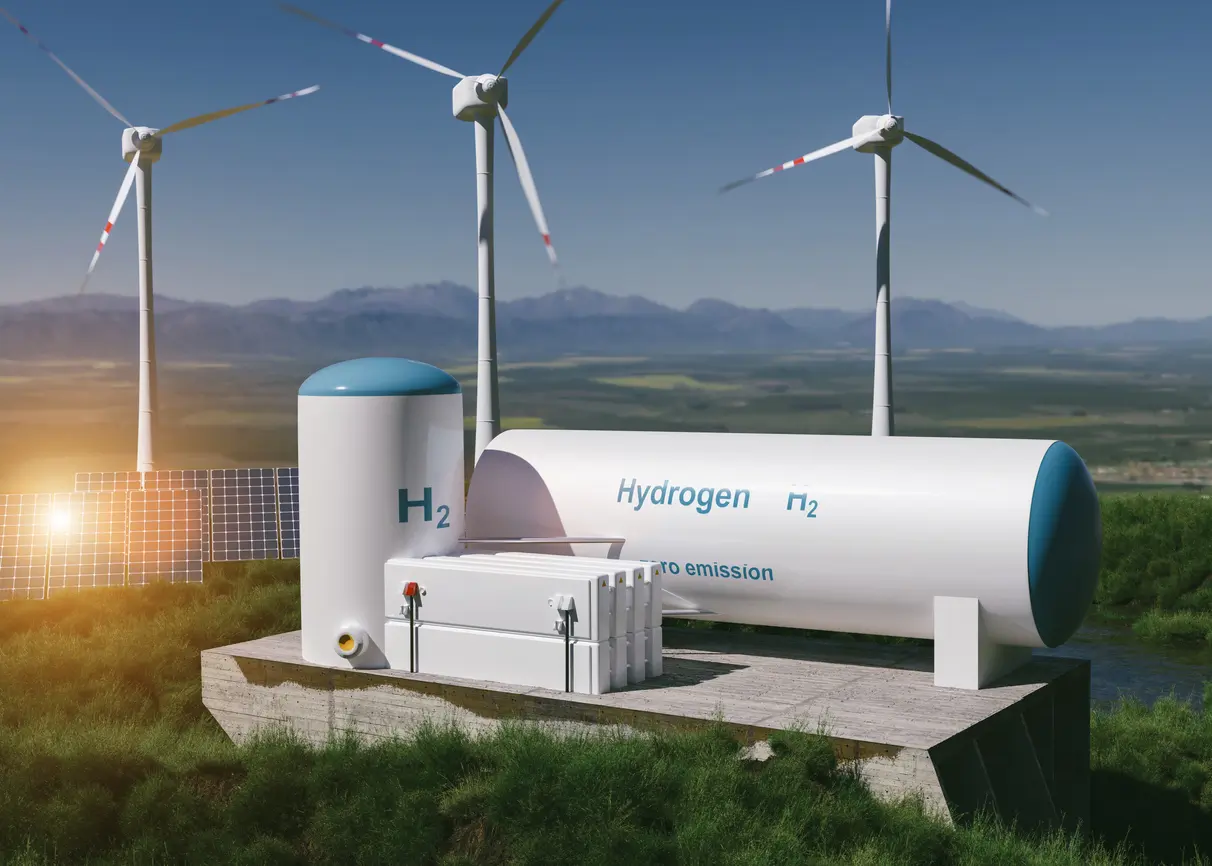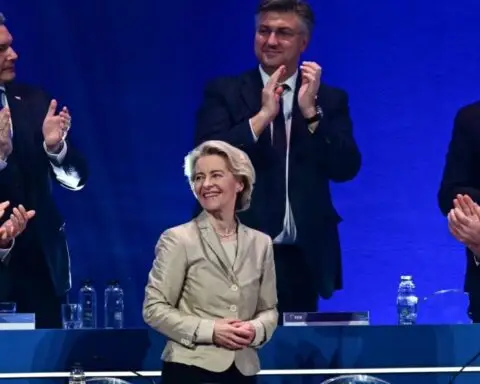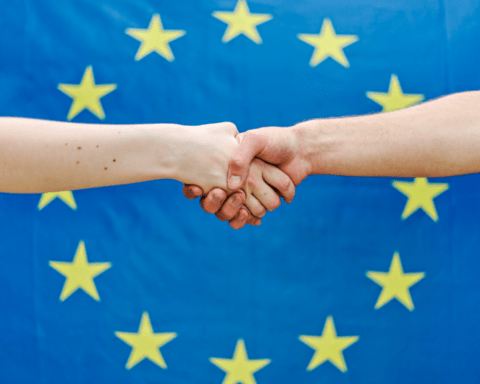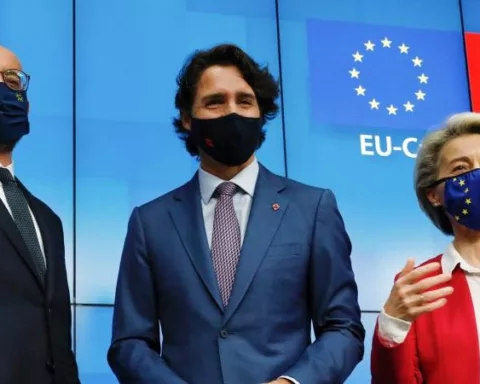The European Commission has approved, under EU State aid rules, a €170 million Danish scheme to support the production of renewable hydrogen through Power-to-X (‘PtX’) technologies.
The measure aims to contribute to the development of renewable hydrogen in line with the objectives of the EU Hydrogen Strategy and the European Green Deal.
The scheme will also contribute to the objectives of the REPowerEU Plan to end dependence on Russian fossil fuels and fast forward the green transition.
The Danish scheme
Denmark notified the Commission of its intention to introduce an around €170 million scheme (DKK 1.25 billion) to support the upscaling of the production of renewable hydrogen and derivatives, such as renewables-based ammonia, methanol, and e-Kerosene, using PtX technologies.
PtX refers to a group of technologies that turn electricity into carbon-neutral synthetic fuels. The key PtX technology is electrolysis, which uses electricity to decompose water into oxygen and hydrogen gas that can be used as a fuel or in chemical processes.
The scheme will support the construction of up to 100-200 MW of electrolysis capacity. The aid will be awarded through a competitive bidding process to be concluded in 2023. The tender will be open to all companies planning to construct new electrolysers in Denmark.
The aid will take the form of a direct grant for a ten year period. Beneficiaries will have to prove compliance with EU criteria for the production of renewable fuels of non-biological origin. This includes contributing to the deployment or financing of the additional renewable electricity needed to produce the PtX products supported under the measure.
The new electrolysers are expected to reduce greenhouse gas emissions by approximately 70,000 tonnes of CO2 annually across the industrial, mobility and energy sectors.
The scheme will contribute to Denmark’s efforts to reduce its greenhouse gas emissions by 70% by 2030 compared to the 1990 level and to reach carbon neutrality by 2050. It will also help the EU reach its 2030 target for renewable energy production, which the Commission has proposed increasing to 45%.
The Commission’s assessment
The Commission assessed the measure under EU State aid rules, in particular Article 107(3)(c) the Treaty on the Functioning of the European Union, which enables Member States to support the development of certain economic activities under certain conditions, and the 2022 Guidelines on State aid for climate, environmental protection and energy (‘CEEAG’).
In particular, the Commission found that:
- The scheme is necessary and appropriate to facilitate the production of renewable hydrogen, and thus the decarbonisation of the industrial, transport and/or energy sectors.
- The measure has an “incentive effect”, as the as the beneficiaries would not carry out the relevant investments without the public support.
- Denmark put in place sufficient safeguards to ensure that the scheme has a limited impact on competition and trade within the EU. In particular, the beneficiaries will be selected following an open, transparent and non-discriminatory bidding process and the aid will be kept to the minimum necessary to undertake the projects. In addition, the aid will bring about positive effects, in particular on the environment, in line with the European Green Deal, that outweigh any possible negative effects in terms of distortions to competition.
On this basis, the Commission approved the Danish scheme under EU State aid rules.
Background
The Commission’s 2022 CEEAG provide guidance on how the Commission assesses the compatibility of environmental protection, including climate protection, and energy aid measures which are subject to the notification requirement under Article 107(3)(c) TFEU.
The new guidelines, applicable as of January 2022, create a flexible, fit-for-purpose enabling framework to help Member States provide the necessary support to reach the Green Deal objectives in a targeted and cost-effective manner. The rules involve an alignment with the important EU’s objectives and targets set out in the European Green Deal and with other recent regulatory changes in the energy and environmental areas and cater for the increased importance of climate protection. They include sections on energy efficiency measures, aid for clean mobility, infrastructure, circular economy, pollution reduction, protection and restoration of biodiversity, as well as measures to ensure security of energy supply, subject to certain conditions.
The Renewable Energy Directive of 2018 established an EU-wide binding renewable energy target of at least 32% by 2030. In addition, it set out stringent criteria for renewable fuels of non-biological origin, such as renewable hydrogen and other renewable PtX products, to ensure that their environmental impact is minimal and that they contribute to the deployment of renewable energy. Amongst others, emission savings of the end product must be at least 70% across the entire value chain.
With the European Green Deal Communication in 2019, the Commission reinforced its climate ambitions, setting an objective of no net emissions of greenhouse gases in 2050. The European Climate Law in force since July 2021, which enshrines the 2050 climate neutrality objective and introduces the intermediate target of reducing net greenhouse gas emissions by at least 55% by 2030, set the ground for the ‘Fit for 55′ legislative proposals presented by the Commission on 14 July 2021. Among these proposals, the Commission has presented amendments to the Renewable Energy Directive and the Energy Efficiency Directive with more ambitious binding annual targets to increase the production of energy from renewable sources and reduce energy use at EU level.
On 18 May 2022, the Commission published the REPowerEU plan, which sets out a series of measures to rapidly reduce EU’s dependence on Russian fossil fuels by accelerating the clean energy transition, including a Hydrogen Accelerator. The REPowerEU plan is based on three pillars: saving energy, producing clean energy and diversifying the EU’s energy supplies. As part of its scaling up of renewable energy in power generation, industry, buildings and transport, the Commission proposed to increase the target in the Renewable Energy Directive to 45% by 2030.
On 13 February 2023, the Commission proposed detailed rules to define what constitutes renewable hydrogen in the EU, with the adoption of two Delegated Acts required under the Renewable Energy Directive.
The non-confidential version of the decision will be made available under the case number SA.103648 in the State aid register on the Commission’s Competition website once any confidentiality issues have been resolved. New publications of State aid decisions on the internet and in the Official Journal are listed in the Competition Weekly e-News.





